#Museum Gustavianum Uppsala
Explore tagged Tumblr posts
Text

Egyptian mummy by Celeste Lindell on Flickr.
This is one of the "yellow coffins" of the 21st Dynasty. A time of change, it's got its own style of coffins and papyri, heavy on images. In the centre of this one you can see the figure I've nicknamed "the Gentleman", snake-headed, bearded, and plumed, holding two knives -- at least, until I figure out who he is! He is worshipped by Nephthys. At the Museum Gustavianum, Uppsala. (ETA: Wait. Is he wearing a dress?)
ETA: On the funerary papyrus of Nespeheran, the Gentleman is called Maaty, "the Righteous One", and comes from Thinis.
#Ancient Egypt#Museum Gustavianum Uppsala#The Gentleman#Nephthys#Shu#Nut#Iabet#Amentet#Neith#Hathor#21st Dynasty#Third Intermediate Period
10 notes
·
View notes
Video
youtube
Gustavianum öppnar igen
0 notes
Text
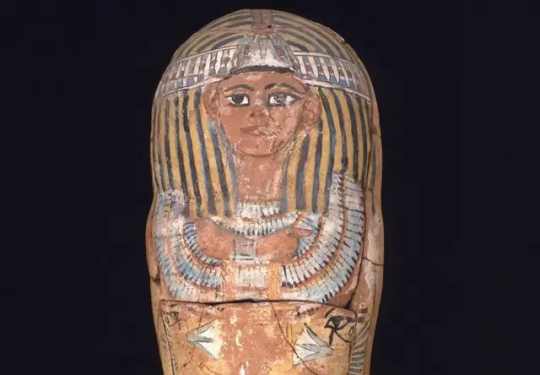
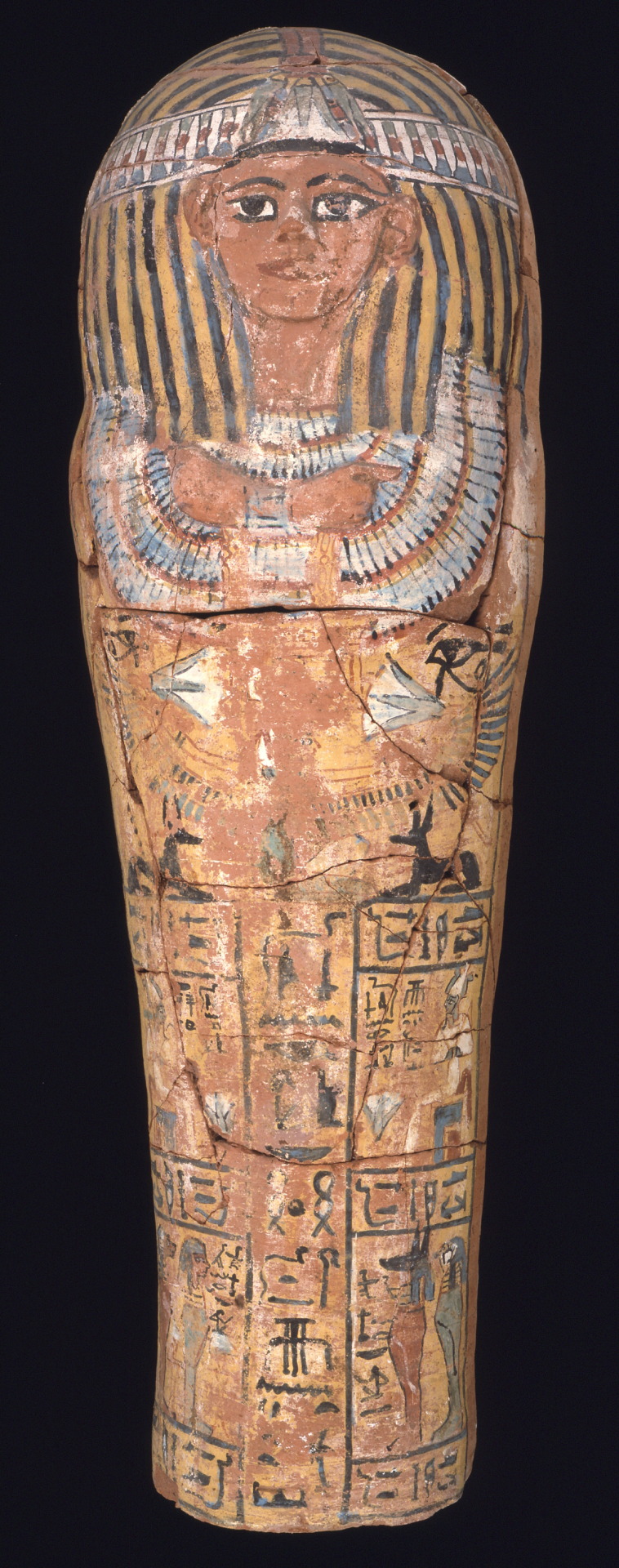
MFA Boston Returns Stolen Egyptian Child Sarcophagus to Sweden
The coffin was taken from the collection of a museum in Uppsala.
A coffin that was used to bury an Egyptian child named Paneferneb between about 1295 and 1186 B.C.E., which has been in the hands of the Museum of Fine Arts Boston since 1985, has been returned to a museum in Sweden after MFA staff discovered that the piece was stolen from the Gustavianum, Uppsala University Museum, around 1970.
The British School of Archaeology in Egypt unearthed the coffin in 1920 at Gurob, Egypt. Overseeing the dig was Flinders Petrie, who, with his wife, Hilda Urlin, excavated numerous important archaeological sites. Among his most significant finds was the Merneptah Stele in 1896; he also discovered the Proto-Sinaitic script, the ancestor of almost all alphabetic scripts, in 1905.
At the time, the Egyptian government had put in place a system of “partage,” or a division of finds, whereby it distributed the results of archaeological excavations between Egypt and the foreign parties sponsoring the digs. As part of that system, the coffin went in 1922 to Uppsala University’s Victoria Museum of Egyptian Antiquities, as it was then called. But the sarcophagus, made of pottery and measuring about 43 inches in length, went missing by at least 1970.
The coffin resurfaced in 1985, when the MFA bought it from one Olof S. Liden, who claimed to represent the artist Eric Ståhl. He presented a forged letter in which Ståhl supposedly recounted having excavated the coffin at Amada, Egypt, in 1937. Liden also presented falsified documents authenticating the coffin, purportedly from experts in Sweden. Ståhl, noted the museum in its announcement of the return of the coffin, “is not known to have participated in any excavation in Egypt.”
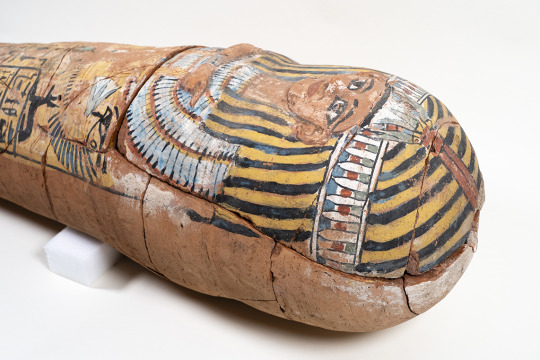
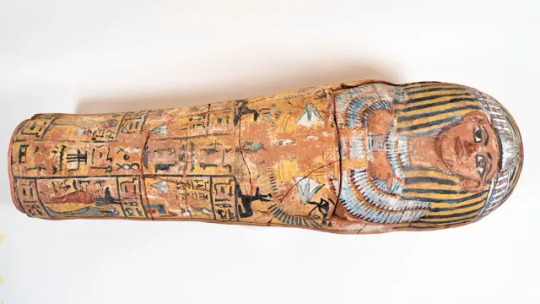
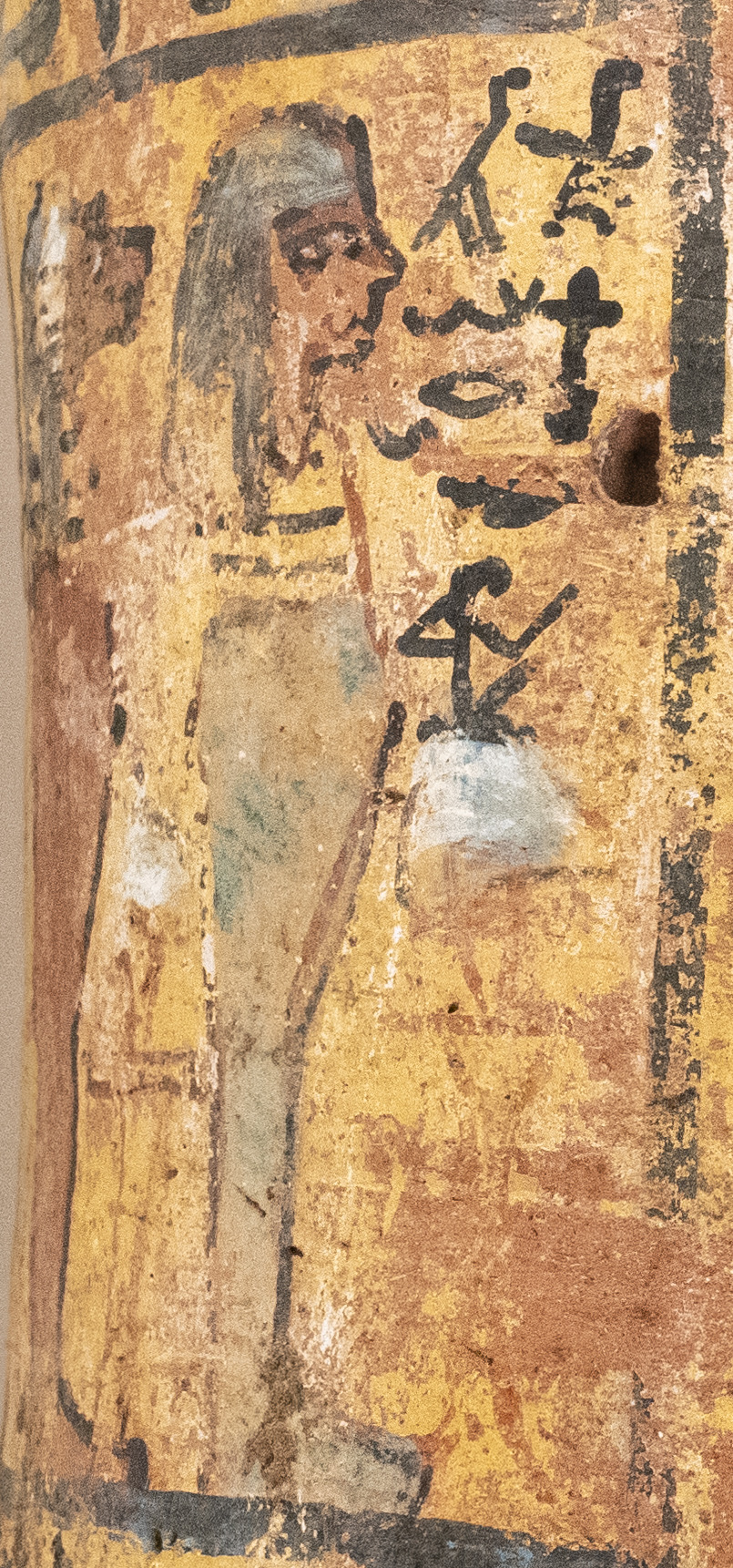
Curators at the MFA first smelled a rat upon finding a photograph of the coffin in the process of excavation in the 2008 book Unseen Images: Archive Photographs in the Petrie Museum, which noted that it went to Uppsala. When they noted the discrepancy, they contacted the staff at the Gustavianum, and the process of returning the piece began; the museum’s website stated that it was deaccessioned in October.
“It has been wonderful working with our colleagues in Uppsala on this matter, and it is always gratifying to see a work of art return to its rightful owner,” said Victoria Reed, senior curator of provenance at the MFA. “In this case, we were fortunate to have an excavation photograph showing where and when the coffin was found, so that we could begin to correct the record. Anytime we deaccession and restitute a work of art from the museum, it serves as a good reminder that we need to exercise as much diligence as possible as we build the collection.”
The MFA Boston’s department of the art of ancient Egypt, Nubia, and the Near East includes some 65,000 artifacts, including sculpture, jewelry, coffins, mummies, mosaics, and more, placing it among the world’s largest collections of such items, along with institutions like the Grand Egyptian Museum in Giza and London’s British Museum. The Gustavianum houses a collection of about 5,000 examples.
By Brian Boucher.
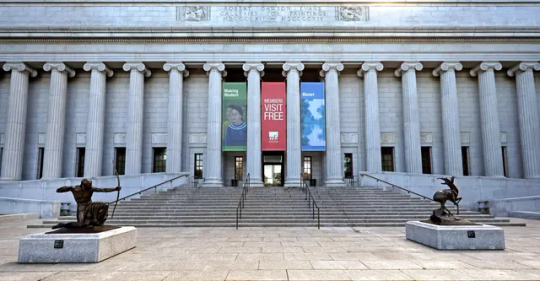
#MFA Boston Returns Stolen Egyptian Child Sarcophagus to Sweden#Egyptian child named Paneferneb#sarcophagus#ancient artifacts#archeology#archeolgst#history#history news#ancient history#ancient culture#ancient civilizations#ancient egypt#egyptian history#egyptian hieroglyphs#egyptian art#egyptian antiquities#looted art#stolen art
23 notes
·
View notes
Text
A mummy is returned... to Sweden.


A 3,200 year old mummy sarcophagus is being moved from Museum of Fine Arts in Boston to the Uppsala University Museum after it was discovered it had been sold using forged documents in 1985, and the artifact had disappeared from Uppsala's collection in the 1970's.
"It is very gratifying that this return has now come to pass. The sarcophagus is an excellent complement to our Egyptian collections and will now be available for research. It needs some restoration, however, and it will be some time before it can be shown to the public in Gustavianum,” says Mikael Ahlund, Museum Director of Gustavianum, or Uppsala University Museum.
Link.
#sweden#uppsala university#uppsala museum#boston museum of fine arts#museum of fine arts#history#mummy
1 note
·
View note
Text
A Guide to Sweden's Top 10 Cities to Visit
A Guide to Sweden's Top 10 Cities to Visit
Sweden has beautiful scenery, a long past, and a lively society. It has long been a destination for travellers looking for a different kind of European experience. There are many interesting things to see in Sweden, from the beautiful northern lights in the Arctic to the busy streets of its big towns. It can be hard for first-time visitors or returning travellers to choose which places to see because the country has so much to offer. This is true for all cities, from the capital, Stockholm, with its beautiful islands, to the coastal gem, Gothenburg. Start reading the following text and go on a trip through some of Sweden's most beautiful cityscapes. These towns in Sweden will give you a unique trip, whether you're interested in history, modern buildings, or natural beauty. Come with us as we discover the history, beauty, and charm of Sweden's most popular towns.
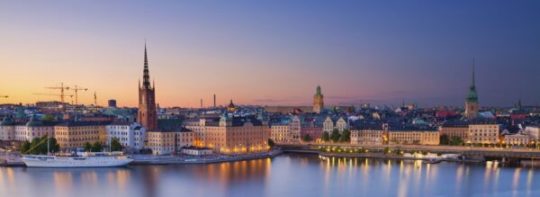
Here are some A Guide to Sweden's Cities to Visit
1. Stockholm: The City's Beauty: Stockholm is the capital city of Sweden and is often called the "Venice of the North." It has a great mix of history, culture, and natural beauty, spread out over 14 islands. Gamla Stan, the beautiful old town, is a maze of cobblestone streets lined with buildings that are a golden colour. There are royal houses and old churches there. Don't miss the chance to visit the world-class museums. For example, the Vasa Museum has a ship from the 17th century on display.
2. Gothenburg is a great beach town: Gothenburg is the second-largest city in Sweden. It is a lively coastal city known for its great fish, fun events, and modern art scene. One of the main draws is the Liseberg amusement park, which has rides for people of all ages. While you're here, take a walk through Haga, the oldest neighbourhood in the city, and enjoy a classic Swedish "fika" (coffee break).
3. Malmo: The Meeting Point of Cultures: Malmo is in the very southern part of Sweden. The Turning Torso, which is the biggest building in Scandinavia, shows how modern the city wants its buildings to be. Malmo's old town streets and mediaeval buildings, on the other hand, tell stories of its long past. Malmo is a cultural hub between two countries because it is right across the bridge from Copenhagen, Denmark.
4. The Historic University Town of Uppsala: You can get to Uppsala by train from Stockholm in a short time. It is famous for its big church and well-known university. The city has a young feel to it because there are so many students there. Fans of history should check out Gustavianum, the oldest building in the city. It is now a museum that shows Uppsala's past from the time of the Vikings onward.
5. Lund: A Charm from the Middle Ages: Lund is another old college town that has been around since the time of the Vikings. Its well-preserved mediaeval street plan and the beautiful Romanesque church of Lund Cathedral are both must-sees. Lund University students enjoy "Walpurgis Night" in April, turning the city into a lively show with bonfires and singers.
6. Kiruna: The Wonder of the Arctic: Kiruna is in the Arctic Circle, which means it has access to magical nature sights like the Northern Lights and the midnight sun. This mining town is also known for the Icehotel, which is made of nothing but ice and snow. If you go in the winter, popular things to do on the snow are dog sledding and snowmobile trips.
7. Visby: Going Back in Time: Visby on the island of Gotland is almost like a time capsule. It has well-preserved Hanseatic houses lining its gravel streets, and walls and watchtowers from the Middle Ages surround them. Mediaeval Week is held every summer in Visby. The town comes alive with contests, parades, and markets set in the Middle Ages.
8. Helsingborg: The City by the Port: Helsingborg is a cute city on the coast with lovely beaches, parks, and gardens. Karnan, a mediaeval tower, is one of the city's features. From it, you can see a lot of the city and the country next door, Denmark. People love to relax and have meals at Sofiero Castle and its beautiful grounds.
9. Orebro: The Beautiful Lakeside Town: The location of Orebro next to Lake Hjalmaren is very nice. The well-known Orebro Castle, which is located on an island, has held control over the city since the 1300s. Along with its ancient sites, the city has a bustling food scene, with many restaurants and bars along the Svartån River.
10. Norrkoping: How the Industry Has Changed Over Time: People often call Norrkoping the "Manchester of Sweden" because it used to be a big industry city. Its old buildings and mills are now museums, art galleries, and cool places to hang out. Along the Motala River, the city's Industrial Landscape area shows how its industrial history is mixed with current city life.
When we visit Sweden's best towns, we get a feel for the country's rich culture, history, and natural beauty. Nobody can help but fall in love with Sweden. From the busy streets of Stockholm to the peaceful beauty of Kiruna, the country has something for everyone. If you are from India and want to go on this Nordic trip, you need to get a Sweden tourist Visa from India. With its own special charm, each city makes you want to get lost in its story. Sweden has a rich past that mixes perfectly with its current energy, giving tourists a unique experience. As our guide ends, keep in mind that travelling isn't just about seeing places; it's also about experiencing them. Now that you have your visa and are ready to go, go to one of Sweden's beautiful towns. Enjoy the trip, and remember the events for a long time after it's over. Have a safe trip!
#Sweden Visa Service#Sweden Visa from India#Sweden visa from India#Sweden visit visa from Indian price#Sweden tourist visa from India#Sweden tourist visa
0 notes
Photo

Gustavianum
18.02.18
1 note
·
View note
Text





The University of Uppsala as it appears in "Anno 1790" (2011). The university was founded in 1477. The Gustavianum, which contains this anatomical theatre, dates from the 17th century and is now a museum.
9 notes
·
View notes
Photo

When you show up to anatomy class but realize you're a century late... * #gustavianum #history #historical #theatre #disection #anatomy #university #museum #uppsala #uppsalauniversity #class #classroom #tourist https://www.instagram.com/p/Bud8EJpg_ze/?utm_source=ig_tumblr_share&igshid=c58y5y0xcbvh
#gustavianum#history#historical#theatre#disection#anatomy#university#museum#uppsala#uppsalauniversity#class#classroom#tourist
0 notes
Photo

These are not ancient runes. They are not Viking runes. These rune staves were carved in the 17h or 18th century in Dalarna, Sweden. I saw these staves, not on display, but in storage in the non-public archives of the museum in Uppsala. These “Delecarlian runes” were in use in Sweden up until the 20th century. Scientist Linnaeus commented in 1734 that peasants in Dalarna still used runes for calendar staves and to write their own names on things to mark property. They were not used for divination or magic like in pagan times, and they look different since they have been merged with latin characters too. #dalarna #dalecarlianrunes #rune #runic #runology #swedishhistory #sweden (at Gustavianum) https://www.instagram.com/p/B0neTIJgWaX/?igshid=kf7300ww9nt7
12 notes
·
View notes
Text
11 rare tourist attractions in Uppsala?
11 rare tourist attractions in Uppsala?
1- Museum Gustavianum Uppsala University’s most seasoned existing structure is currently a museum for the college’s assortments. There are mummies and old coins, just as curios from the age of the Vikings, and instruments from Linnaeus, Rudbeck and Celsius. The structure likewise houses the creatively decorated Augsburg Art Cabinet and the Anatomical Theater. 2- Uppsala Concert and…

View On WordPress
0 notes
Text

The Nordic Museum in Ballard is now officially the National Nordic Museum.
2655 NW Market Street�� Seattle, WA
The Nordic’s designation is to recognize the museum’s work to preserve and educate the public about Nordic history, culture, and art. It’s the only museum in the U.S. that’s solely focused on Nordic immigrants from Denmark, Finland, Iceland, Norway, and Sweden.
“The Nordic Museum is a capstone of a long story about Nordic heritage in Seattle,” Senator Cantwell said in a statement. “Establishing the National Nordic Museum will help support local tourism and drive economic development as well as help further preserve our region’s Nordic history, and maritime and fishing heritage.”
How Did The Vikings Begin?
Based on the latest research conducted on both historic and recent discoveries of Viking-era artifacts by Uppsala University in Sweden, The Vikings Begin tells the story of the Vikings of early Scandinavia (Sweden, Denmark, and Norway)—an intensely maritime society with a very close and important relationship to the sea. Uppsala University’s museum, Gustavianum, has produced this exhibition of original artifacts, reconstructions, and archaeological discoveries from early Viking Age society using cutting-edge research done by Uppsala professor Neil Price and his team. These objects tell the story not only of the person buried with them, but also of the world they inhabited: its social and economic makeup, its religions, and its culture.
Current Exhibits include -

Fridtjof Nansen
A biographical narrative of the Norwegian explorer and humanitarian, Fridtjof Nansen studies a purposeful life of scientific learning and exploration, political travails, and humanitarian devotion. May 5 – Aug. 5, 2018.
Lessons from the Arctic: How Roald Amundsen Won the Race to the South Pole

Norwegian explorer of polar regions and a key figure of the Heroic Age of Antarctic Exploration. He led the first expedition to traverse the Northwest Passage in 1906 and the first expedition to the South Pole in 1911. He possibly led the first expedition to reach the North Pole in 1926; the expedition of 1926 is the earliest expedition proven to have reached the North Pole. He disappeared while taking part in a rescue mission for the airship Italia in 1928.
Photos and scholarly text explain in detail how Roald Amundsen spent his youth preparing for a life in the polar regions, his first meeting with the Antarctic, the three years he spent with the Inuit in the Arctic region, and the historic Race for the South Pole from 1910 to 1912.
0 notes
Text
RT ahencyclopedia RT HistoryofViking: These helmets were excavated during the 1920s on a Swedish farm called Valsgärde. The helmets were found in ship burials and date to the Vendel Period, ca. 550-790 A.D. Gustavianum, Uppsala University Museum. https://t.co/clMnGzqzTA
RT ahencyclopedia RT HistoryofViking: These helmets were excavated during the 1920s on a Swedish farm called Valsgärde. The helmets were found in ship burials and date to the Vendel Period, ca. 550-790 A.D. Gustavianum, Uppsala University Museum. pic.twitter.com/clMnGzqzTA
— Ancient History Guy (@ancient_guy) February 26, 2020
from Twitter https://twitter.com/ancient_guy
0 notes
Photo

From the Gustavianum museum Uppsala. #gustavianum
0 notes
Photo

Museum Gustavianum
18.02.18
0 notes